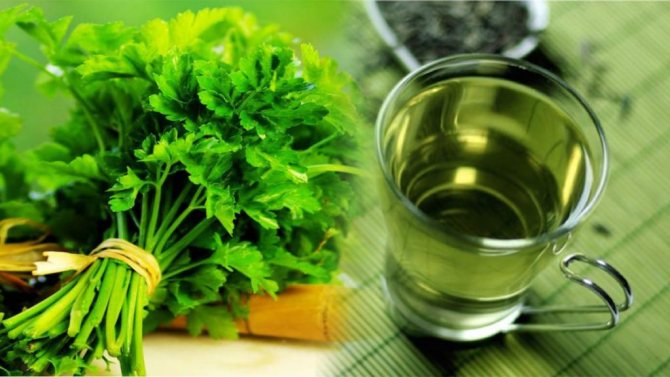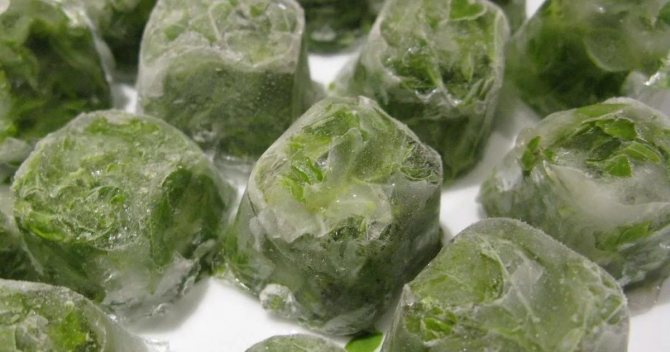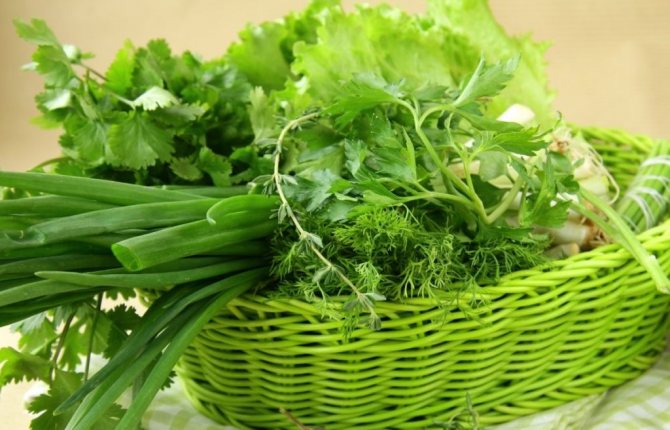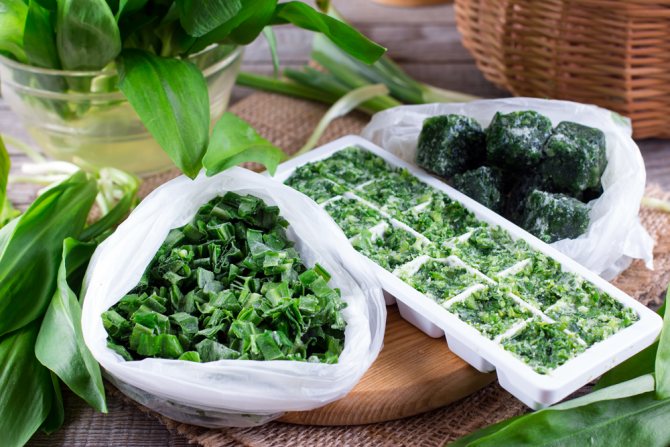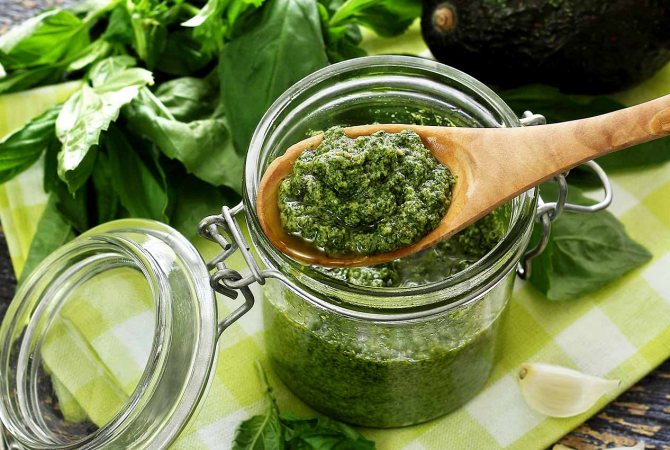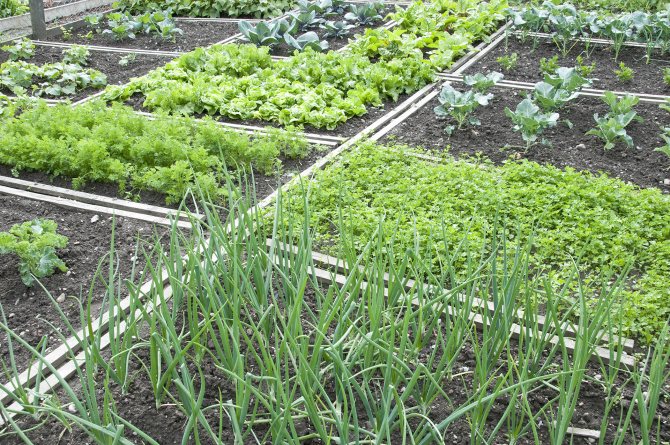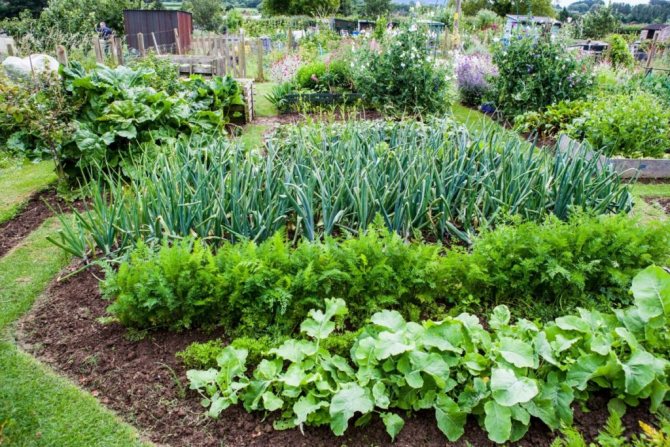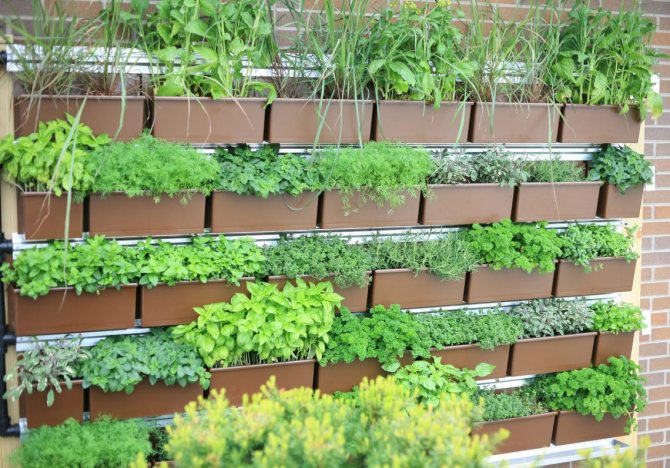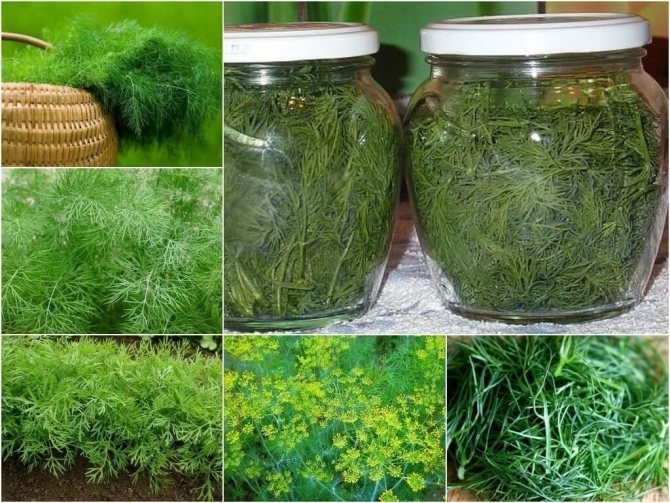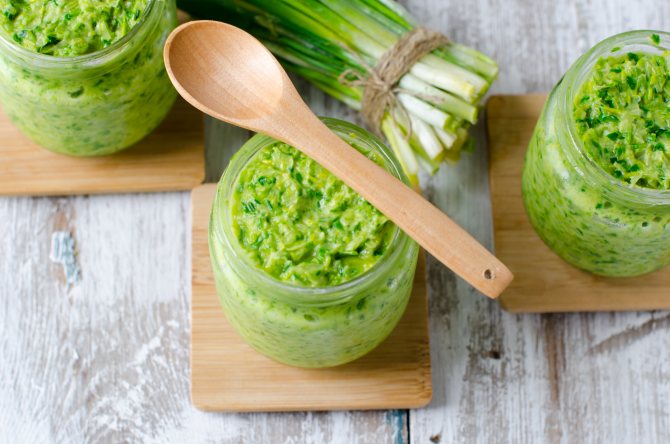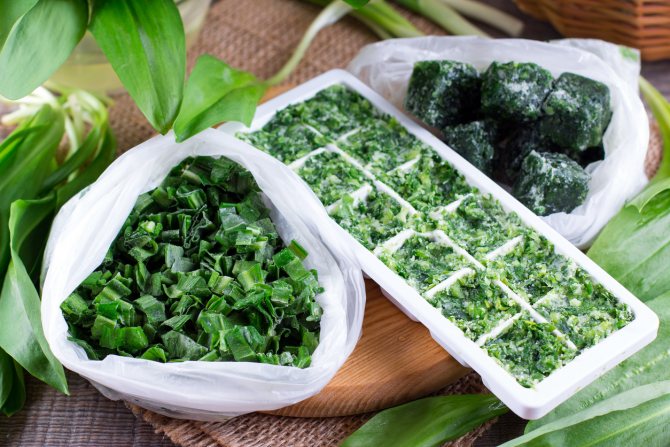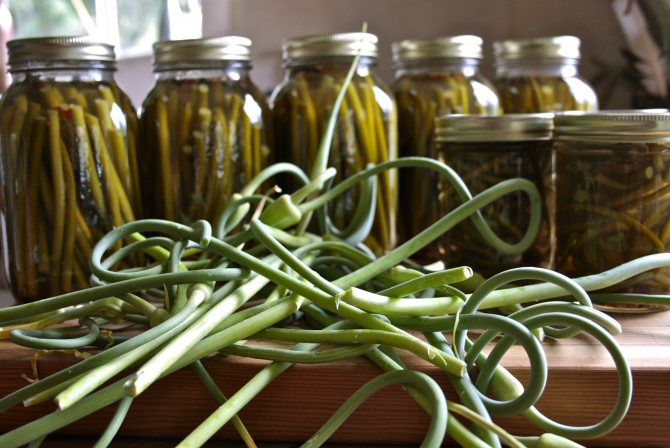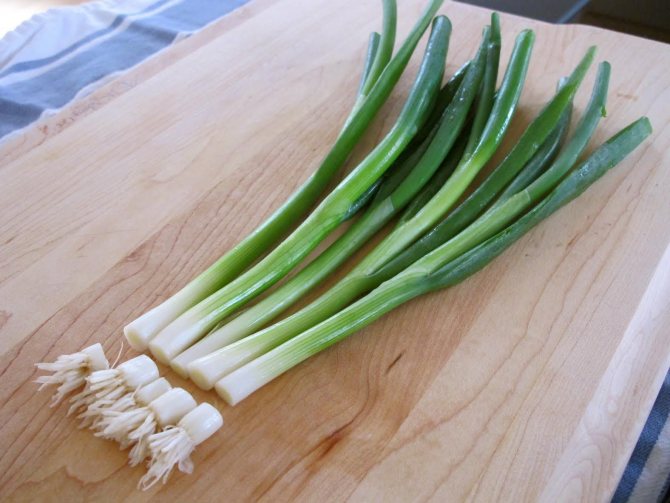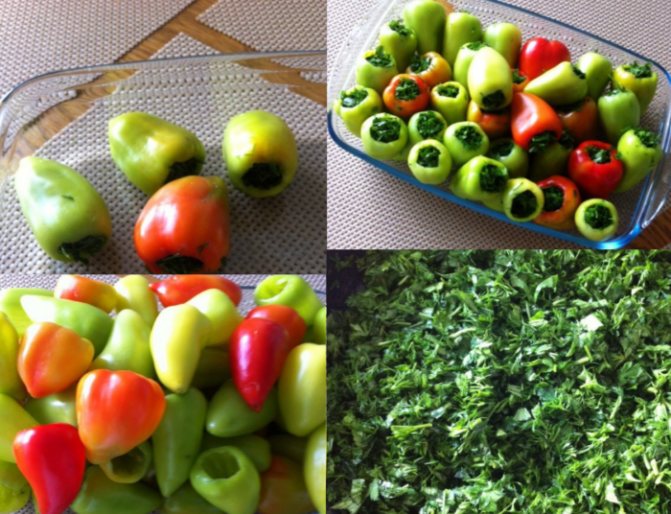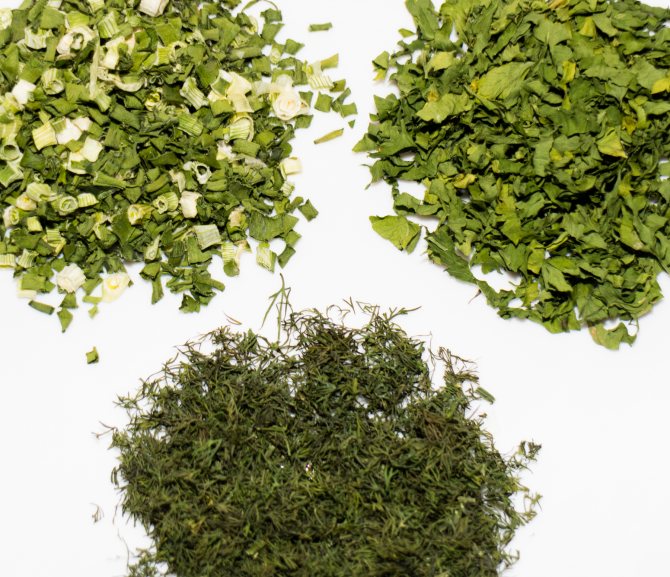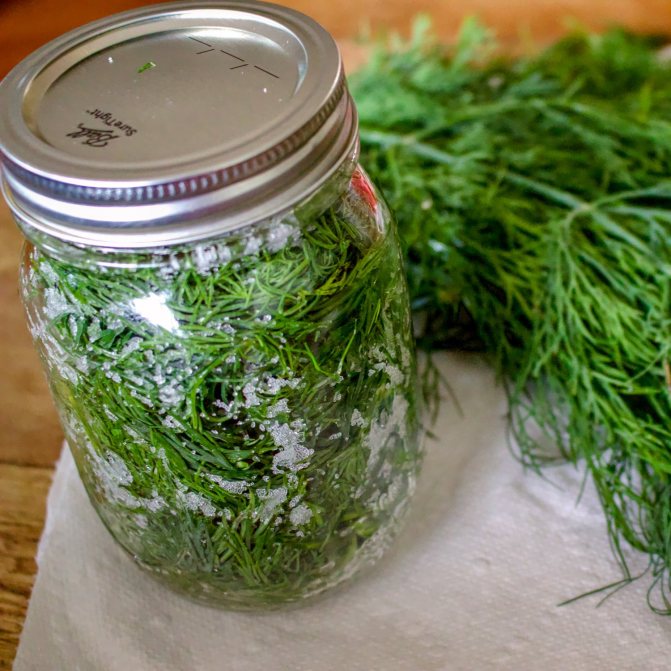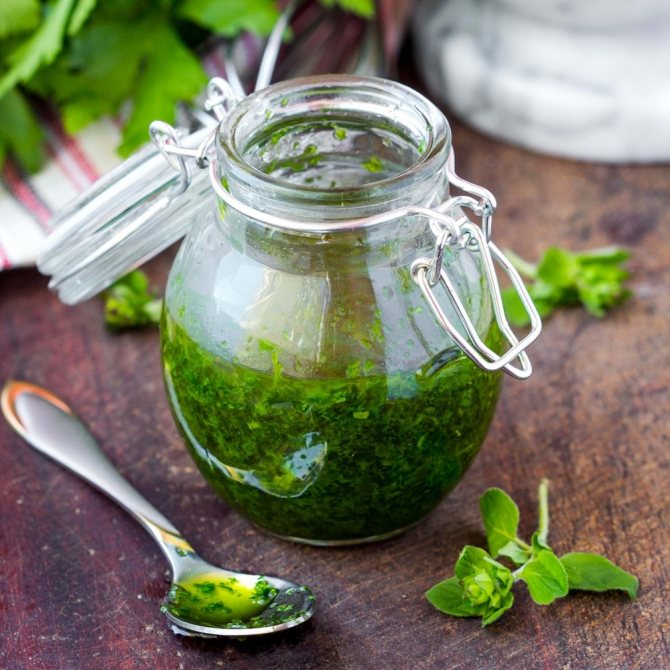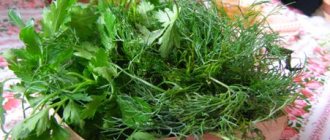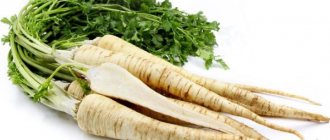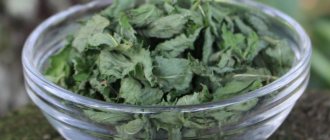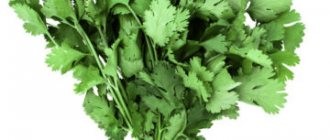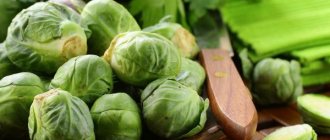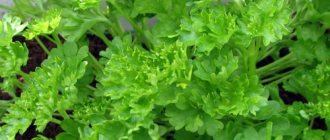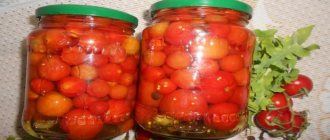How to store parsley. Fridge and freezer storage
The aromatic herb can be kept at home until the next harvest and even longer. If you collected greens at the end of autumn, then saving it at least until the new year without preliminary processing will not be difficult. To do this, take a glass jar with a screw cap, wash and sterilize it.
Tear off the leaves from a bunch of greens, transfer them to the prepared container and place in the refrigerator. In this case, the parsley must be unwashed and completely dry. Screw-top jars are best suited for this method of savings. If necessary, simply remove the correct amount of seasoning and screw the jar tightly back on.
In a hermetically sealed plastic bag, greens can lie on the vegetable shelf of the refrigerator for up to 14 days.
If you want to preserve a healthy plant longer, resort to freezing it. There are many techniques for storing herbs in the freezer. The easiest way is to freeze the greens in bunches. Go through the stems and wash them well under the tap. If the parsley is very dirty, soak it for 5-10 minutes in cold water and then rinse thoroughly.
Wet greens must be completely removed from moisture by blotting with a towel. Next, form bundles, each about 30-50 g, wrap them individually in bags and put everything in one container.
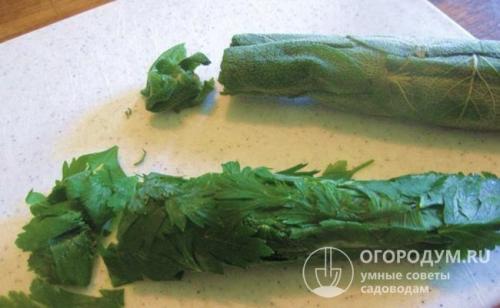
The frozen bunch should be thin enough to be easy to cut
Planning to use greens exclusively in soups? Then freezing parsley in ice cube trays is the way to go. After washing and drying the branches, chop them and place them in the recesses of the mold. Fill each compartment 2/3 full and cover with water or melted butter.
Put the blank in the freezer for several hours, then remove the mold and put the finished cubes in a bag. You can freeze dill, cilantro, and other herbs in a similar way. You can learn more about storing different types of greens from our article.
Never re-freeze a thawed product - it will lose most of its useful qualities and visual appeal.
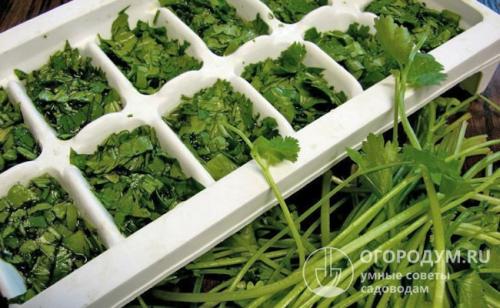

Parsley ice cubes are easy to prepare with an ice cube tray
If the previous methods seemed too troublesome for you, you can simply chop the greens, put them in a container or bag and freeze. When using, you will need to take the required amount of seasoning from the total mass and again hide the workpiece in the freezer.
Freezing
You can freeze greens in small portions or in plastic bags, cling film, glass jars, containers, etc. You can also add other spices there.
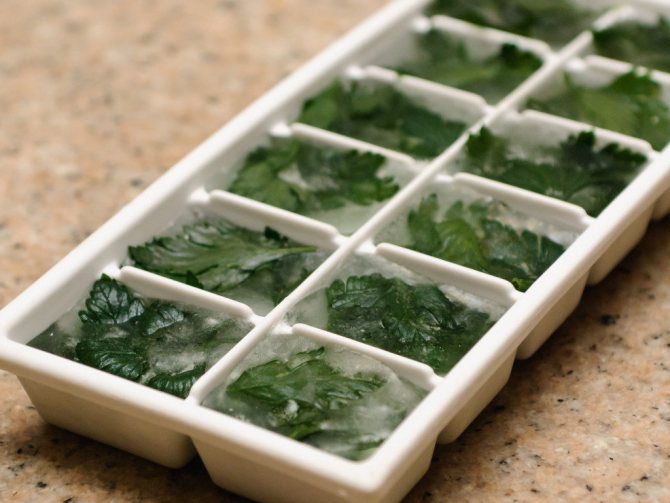

Just cut the roots together with the leaves into small pieces and put them in plastic bags. Now you know how to save parsley using a simple and quick option. It will be an addition to various dishes.
How to store dried parsley. Dried parsley. How to dry parsley.
Dried parsley, how to collect, how to dry parsley and store it correctly - read about all this and much more in our today's article.
Without a doubt, every housewife loves when everything is at hand, especially when it comes to the kitchen. An uncountable number of jars with various spices and seasonings, which only she herself can figure out.How can we do without it? After all, seasoning is not an unimportant ingredient in food preparation, and sometimes the most significant one. You just need to remember that only with proper use can you get the desired aroma and, accordingly, a positive result. How to cook a delicious dish and how to season it better is a topic for the next article. And today we will learn how to prepare a spice for its further use, in this case we will talk about parsley.
Agree how convenient it is not to constantly run to the garden or to a nearby store for seasoning, but simply take out a blank of dried herbs from the shelf, prepare a delicious and aromatic lunch that will delight you and your loved ones. Just note that dried parsley is added only to heat-treated dishes and is suitable mainly for preparing first and second courses. But where fresh herbs are required, nothing can be done - welcome to the vegetable garden.
A little about parsley. Parsley is the most common herb in the world. It is especially good in combination with fresh and stewed vegetables, meat and fish. It is worth mentioning the beneficial properties of this plant. For example, 100 g of a product contains approximately two daily values of vitamin C, which is largely superior to many vegetables and fruits. Parsley also contains a large amount of keratin, is rich in vitamins B1, B2, potassium, iron, magnesium salts, and folic acid.
Here is such a wonderful spice. And now we will learn how to properly harvest it or simply dry it. So let's get down to it, as they say, less words more action.
What can be made from parsley. What is parsley useful for and its use in traditional medicine
Parsley is an aromatic herb that enhances the flavor of food.
Greece is considered the homeland of parsley, where it grows wild. Perhaps the name parsley came from its ability to grow on rocky soil ("petr" in Greek means "stone").
In the middle of the XIV century, it was bred in the monastery gardens of Europe as a spice and medicinal plant.
In Russia, in folk medicine, parsley has long occupied an honorable place: leaves were used to heal wounds and inflammations, improved vision, strengthened gums, reduced freckles with juice, roots and leaves were used as a diuretic for dropsy, edema and kidney stones.
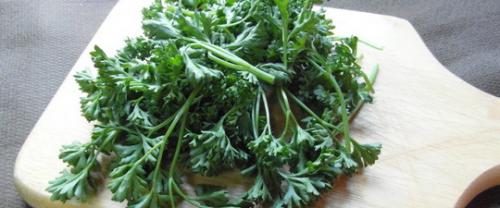

What does parsley contain and what are its beneficial properties? This plant contains many vitamins (B, B3, B5, C, E, K), beta-carotene, biotin, folic acid, iron, iodine, potassium, calcium, magnesium, manganese, selenium, phosphorus, zinc are present. Parsley, rich in vitamins and microelements, is extremely useful for chronic fatigue. 100 grams of young green shoots of parsley contains approximately two daily values of vitamin C. This is 4 times more than the same amount of lemons, and 10 times more than lettuce leaves. In terms of carotene content, parsley is not inferior even to the generally recognized champion - carrots.
How does parsley affect the body, and what diseases is it used to treat? Juice and broth made from parsley leaves are indispensable for vitamin deficiency. In addition, they help to strengthen blood vessels, are effective in acute and chronic cystitis.
What else is parsley useful for, and how can it be used? From the root of parsley, infusions and decoctions are prepared, which are used for kidney stones, inflammation of the prostate gland, with edema of cardiac and renal origin, obesity.
Chewing on fresh parsley root can completely eliminate bad breath.
How to store parsley root. Root storage video
A casual menu is rarely complete without fresh herbs. Parsley is one of the most common types. With its tart taste and pleasant aroma, it gives dishes a special appeal.
Parsley should be on hand at all times. It's good if you can rip the bunch straight from the garden. But not everyone has such an opportunity. And summer does not last all year round. Often you have to buy greens and take care of keeping them longer.
How to keep fresh parsley
Parsley is best picked in the morning, after the sun has dried the dew. At this time, the greens are the most fragrant. But the midday heat can significantly impair its taste.
When buying parsley at the market or in the store, you need to choose bunches of bright green color and with a fresh aroma. These greens will stay in the refrigerator for several days. It is necessary:
- put a bunch of parsley in a jar of water. The leaves should remain at the top and not drown in liquid;
- put a spacious bag on the greens and move to the lower shelf of the refrigerator.
The color and aroma of parsley will last 3-4 days.
To keep fresh greens longer, you can use one of the following methods:
1. Storage of parsley in glass containers:
- Preparing a clean liter jar.
- We wipe the inside with a napkin so that not a drop of moisture remains on the walls.
- Put the parsley in the jar with the roots up. This is to make it easier to get the greens.
- We close it with a polyethylene lid and send the jar to the refrigerator.
Greens stay fresh for up to three weeks.
2. Storing parsley in a bag:
- Place the parsley in a plastic bag.
- Peel a small onion and put it inside.
- In a semi-open form, place the package on the bottom shelf of the refrigerator.
Parsley will not fade or lose its flavor for up to two weeks.
Greens should only be washed before direct use.
Freezing bunches of parsley for the winter
The cold does not destroy the structure of the parsley leaves. Therefore, all the nutrients and fresh aroma are preserved in frozen greens.
The simplest thing is to freeze the parsley in bunches without chopping it into pieces. Procurement sequence:
- We sort out the parsley, remove the yellowed and dried leaves, extraneous blades of grass.
- Cut the coarse petioles.
- We immerse the parsley in water and rinse very thoroughly.
- Place the twigs on a paper towel to dry.
- Divide absolutely dry greens into small bunches and wrap them in cling film. It is important that the amount of parsley in the bag is enough to dress one dish.
- We send the workpiece to the freezer.
Parsley will be excellent throughout the winter. It must be remembered that after defrosting it cannot be re-exposed to cold.
Other ways to freeze parsley
- Rinse the parsley and chop finely.
- Place the herbs in ice cube trays.
- Fill with water and carefully place in the freezer.
- Put the completely frozen cubes into a bag and leave it in the cold.
Greens in this form will last up to four months.
Instead of water, chopped parsley is poured with olive oil or melted butter. Then the dishes seasoned with herbs will become even more appetizing. Parsley frozen in oil can be stored for up to six months.
Storing parsley in salty form
Salt is a natural preservative, so it will perfectly preserve all the beneficial contents of parsley. The salting process is as follows:
- My parsley and chop finely.
- Mix herbs with salt in a 5: 1 ratio. You can use a blender.
- We spread the resulting mixture into a clean glass container. We leave room for the juice that forms as the salt dissolves.
Parsley with salt will last for at least six months.
Harvesting and preparing greens
It is recommended to cut fresh greens for harvesting for the winter on a cool cloudy day so that it is not stale. This is best done early in the morning or in the evening.
After the herbs are cut, they need to be prepared. First of all, sort out and discard dried, yellowed or withered twigs. Then the greens are thoroughly washed under running water and laid out on a towel.The herbs must be completely dry from the water. Subsequent preparation depends on which method of harvesting raw materials for the winter will be chosen.
How to keep parsley for a long time. How to store parsley
A casual menu is rarely complete without fresh herbs. Parsley is one of the most common types. With its tart taste and pleasant aroma, it gives dishes a special appeal.
Parsley should be on hand at all times. It's good if you can rip the bunch straight from the garden. But not everyone has such an opportunity. And summer does not last all year round. Often you have to buy greens and take care of keeping them longer.
How to keep fresh parsley
Parsley is best picked in the morning, after the sun has dried the dew. At this time, the greens are the most fragrant. But the midday heat can significantly impair its taste.
When buying parsley at the market or in the store, you need to choose bunches of bright green color and with a fresh aroma. These greens will stay in the refrigerator for several days. It is necessary:
- put a bunch of parsley in a jar of water. The leaves should remain at the top and not drown in liquid;
- put a spacious bag on the greens and move to the lower shelf of the refrigerator.
The color and aroma of parsley will last 3-4 days.
To keep fresh greens longer, you can use one of the following methods:
1. Storage of parsley in glass containers:
- Preparing a clean liter jar.
- We wipe the inside with a napkin so that not a drop of moisture remains on the walls.
- Put the parsley in the jar with the roots up. This is to make it easier to get the greens.
- We close it with a polyethylene lid and send the jar to the refrigerator.
Greens stay fresh for up to three weeks.
2. Storing parsley in a bag:
- Place the parsley in a plastic bag.
- Peel a small onion and put it inside.
- In a semi-open form, place the package on the bottom shelf of the refrigerator.
Parsley will not fade or lose its flavor for up to two weeks.
Greens should only be washed before direct use.
Freezing bunches of parsley for the winter
It will not be difficult to save parsley for several months and even until the next harvest. Freezing is one of the acceptable harvesting methods.
The cold does not destroy the structure of the parsley leaves. Therefore, all the nutrients and fresh aroma are preserved in frozen greens.
The simplest thing is to freeze the parsley in bunches without chopping it into pieces. Procurement sequence:
- We sort out the parsley, remove the yellowed and dried leaves, extraneous blades of grass.
- Cut the coarse petioles.
- We immerse the parsley in water and rinse very thoroughly.
- Place the twigs on a paper towel to dry.
- Divide absolutely dry greens into small bunches and wrap them in cling film. It is important that the amount of parsley in the bag is enough to dress one dish.
- We send the workpiece to the freezer.
Parsley will be excellent throughout the winter. It must be remembered that after defrosting it cannot be re-exposed to cold.
Other ways to freeze parsley
Parsley can be kept in the form of aromatic ice cubes for the winter. We do this:
- Rinse the parsley and chop finely.
- Place the herbs in ice cube trays.
- Fill with water and carefully place in the freezer.
- Put the completely frozen cubes into a bag and leave it in the cold.
Greens in this form will last up to four months.
Instead of water, chopped parsley is poured with olive oil or melted butter. Then the dishes seasoned with herbs will become even more appetizing. Parsley frozen in oil can be stored for up to six months.
Storing parsley in salty form
Salt is a natural preservative, so it will perfectly preserve all the beneficial contents of parsley. The salting process is as follows:
- My parsley and chop finely.
- Mix herbs with salt in a 5: 1 ratio.You can use a blender.
- We spread the resulting mixture into a clean glass container. We leave room for the juice that forms as the salt dissolves.
- We close the container tightly and place it in the refrigerator or in the cellar.
Parsley with salt will last for at least six months.
Preserving dried parsley
Dried parsley perfectly retains its useful qualities, and its aroma not only does not disappear, but also becomes more intense.
We dry the greens like this:
- Rinse the parsley well.
- Dry until there is not a drop of water left on the greens.
- Leave the parsley in its entirety or disassemble it into pieces of paper.
- We lay out the greens in one layer on a baking sheet or sheet of paper.
- Dry in the shade, in a dry and well-ventilated room (the kitchen is fine).
In a few days, the parsley will be ready for long-term storage.
You can also dry greens in the oven, observing the following conditions:
- temperature - 50-60 degrees;
- the oven door does not close (so that air can circulate freely);
- the greens are periodically mixed.
In the oven, the parsley will dry out in 5-6 hours.
Herbs should be stored in an airtight glass container in a dry and dark place. It remains usable for at least a year.
Each housewife has her own way of storing greens. After all, it's not bad at all when, at any time of the year, fresh parsley pleases with its aroma and decorates your favorite dishes.
Method 2. Harvesting herbs with salt
This option is one of the most time-tested. They used it when the housewives did not have freezers at home.
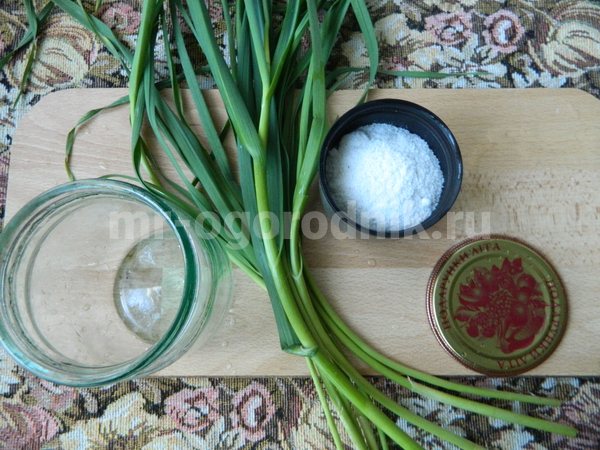

Sort the greens, rinse, dry, finely chop.
Prepare a jar. It is advisable to dry it, and then dry it thoroughly, if there is moisture inside, the greens will rot.
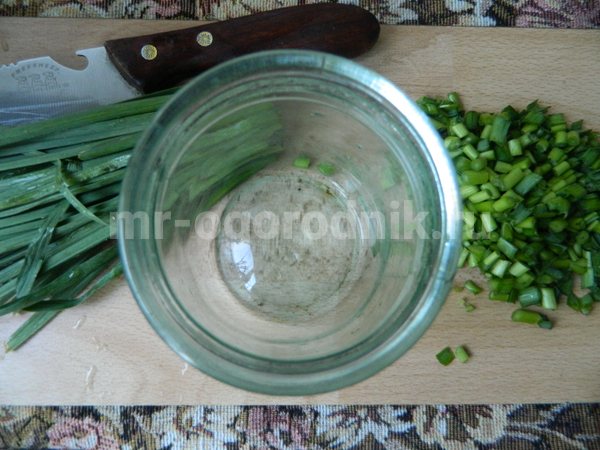

Spread in layers of 2-2.5 cm. First, the greens, then the salt, and so on to the very top.
The last layer should be salt. Seal immediately.
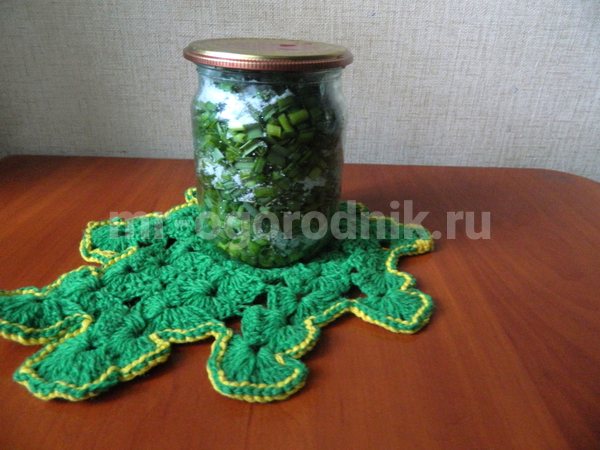

In winter, you can use this blank for any dishes, just do not salt them first.
Parsley sheet storage. Keeping parsley and other greens fresh for the winter is easy
Spices add an exquisite aroma to dishes and improve the taste. The integumentary tissues of young leaves and shoots are thin, therefore they quickly lose moisture and wither.
Harvested plants lose their taste, most of the nutrients.
You can keep fresh parsley in the refrigerator:
- cooling,
- freezing.
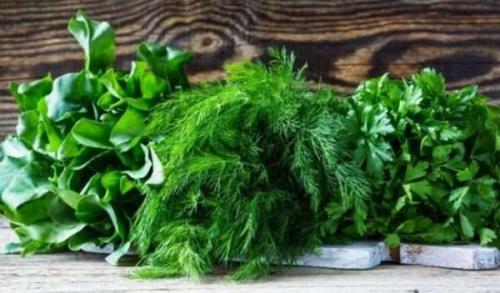

Most often used:
- parsley
- dill,
- onion feathers,
- celery,
- cilantro,
- broadleaf sorrel, spinach.
Popular became:
- tarragon,
- basil,
- arugula,
- wild garlic,
- mint.
The storage time without freezing depends on the type of greenery.
The optimal period is 2 weeks. The temperature should be around 0 ° C.
Spinach will last up to 3 months without freezing, sorrel - up to a month.
Parsley, dill are stored on the top shelf of the refrigerator for a month. Glass jars or plastic bags are used as containers.
In the summer they store for a week, hiding clean juicy twigs in a saucepan and covering with a lid from the sun's rays. When dried, it retains its aroma and useful properties for a year.
Hard celery leaves are stored for one and a half months. Salad cut with stalk will last 5 weeks. Onions with feathers can be stored for 20 days if the roots are hidden after moistening them with water.
How to store at home in winter?
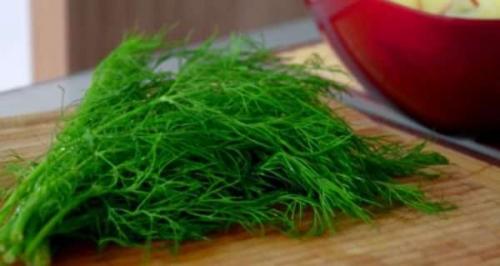

In winter, greens are stored in the following ways:
- grown on a windowsill
- stored dry, frozen,
- make preparations by mixing with table salt, which serves as a preservative.
Growing in boxes
Spices are grown in winter on the windowsill, closer to the source of lighting. In autumn, the roots of parsley, celery, fennel, wild garlic, and onions are harvested.
Cookware 10-15 cm deep is prepared. Nutrient soil is poured, harvested roots are planted.
Green beds on the windowsill require regular maintenance. They are watered without overflowing, so as not to cause rotting of the soil. If the air in the room is dry, spray the seedlings with a spray bottle.
At room temperature
You can keep a bunch of parsley or dill from the market at room temperature. Placed in a glass of water. The shoots will remain usable for 3-5 days. The water is changed every other day.
Important! Parsley stored in this way quickly loses its vitamin C reserves.
You can bring parsley from the dacha with the root. They are planted in a pot, the largest leaves are cut off. They are used for cooking.
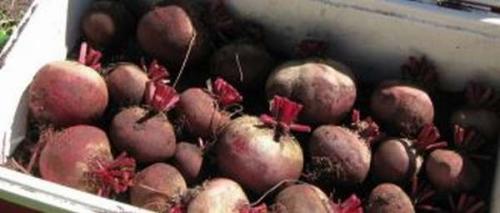

Be sure to read:
5 options to store beets (beetroot) in winter: in a cellar, apartment
This is how basil, mint, and arugula are grown. It is better to install pots with them on the balcony.
In a refrigerator
Most often, the brought spices are stored in the refrigerator. The lowered temperature contributes to the fact that the turgor of the leaves and stems is maintained. The longer they are there, the less vitamins they contain.
Wrap the blank with a paper towel or kraft paper, moisten. Tied with polyethylene. Several holes are punctured to allow air to enter. You can make them with a fork.
The optimum temperature for storage in the refrigerator will be 0 ... + 10 ° С. The best place is the bottom shelf.
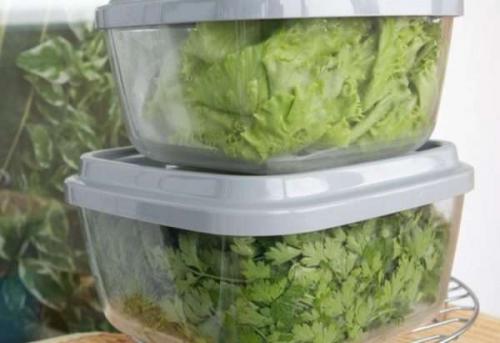

The freezer keeps products longer. The taste qualities of dill and parsley are preserved until spring, but the amount of vitamins is reduced. Therefore, it is advisable to lay a stock for a couple of months, and then renew it.
How to prepare?
Before placing in the refrigerator, the grass, like vegetables, is cleaned of dirt. It is undesirable to expose it to water, especially running under high pressure.
It disrupts the structure of tissues, which contributes to a reduction in shelf life. So that this procedure is not needed, do not pluck the grass during the rain.
The soil is removed from the stems with a dry clean cloth or towel. Wash immediately before use. Sometimes they are gently immersed in a bowl of water, waiting for the mud to sink to the bottom.
Take out, shake off the water, lay on a dry cloth. Remove excess moisture with a paper towel, leave to dry for 20 minutes.
Sort out, choosing undamaged plants. Throw away dry, yellowed parts affected by diseases and pests.
How to store dill. 5 ways to keep dill fresh and flavorful
Dill, especially fresh, can improve the taste of almost any dish, be it salad, soup or hot, which is why no vegetable garden can do without this fragrant herb. But, in order to preserve all its properties, useful not only for cooking, but also for health, it is important to know how to properly store dill so that it remains fresh and aromatic for a long time. The article will tell you about the conditions for storing greens and how to keep the dill fresh for a long time.
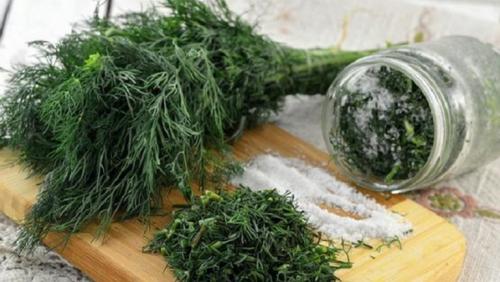

Dill
Storage conditions
Fresh greens quickly turn yellow and wilt, in order to prevent this, there are many different ways to store dill. Many people prefer to dry or freeze it in the freezer (in plastic bags or ice cube trays). However, it is worth remembering that despite the fact that these methods allow you to fully preserve the taste and aroma, both drying and exposure to low temperatures deprive dill of a significant part of vitamins and nutrients. Therefore, it is possible a little more laborious, but much more efficient to store dill in the refrigerator.
5 ways to store dill in the refrigerator
First of all, it is necessary to properly prepare the greens so that they do not lose their properties. This requires:
- Carefully sort out the bunch and remove all dry and yellowed leaves and shoots.
- Rinse the dill in a container with cool water, and then rinse under the tap and wait until all the water is drained.
- Put on a towel and gently blot, then change the towel and leave the greens to dry.
Method number 1: in water
Bunches of greens must be placed in a jar about a quarter filled with water, then put on a plastic bag on top and tightly wrap the neck with a string so that air does not penetrate inside. The resulting structure is placed in the refrigerator.
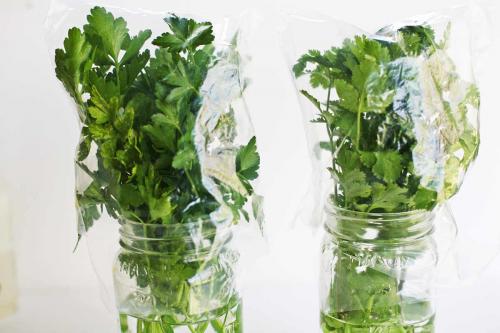

Storing dill in water
This storage method is especially well suited for dill, which has preserved its roots; it will remain fresh for 2-3 weeks.
Method number 2: in a glass jar
For this storage option, it is necessary to separate the leaves and small twigs of dill from the stems, pour into a glass jar and close the lid tightly. In this form, in the refrigerator, the dill will remain green and juicy for 2-3 months, the main thing is that the lid does not allow air to pass through.
Storing dill in a bank
Method number 3: in a plastic bag
Pre-prepared dill must be folded into a tight bag and sealed with tape so that air does not penetrate inside. Inside the bag, the greens will stay fresh for 2 weeks.
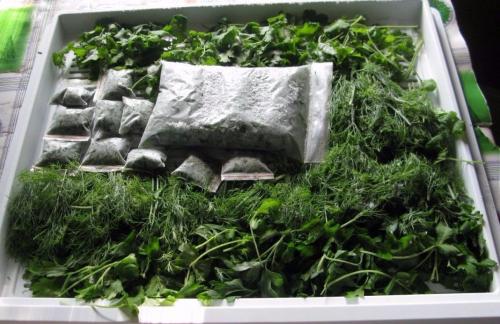

Storing dill in bags
Method number 4: in a paper towel
Dill bunches should be wrapped in a paper towel, lightly sprayed with water and placed inside a plastic bag. You do not need to close the package. Changing the towel every 3-4 days will extend the shelf life of the greens in the refrigerator up to 3 weeks.
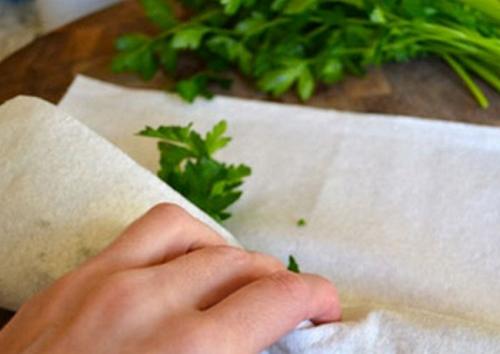

Storing dill in a paper towel
Method number 5: salting
As with method number 2, it is necessary to separate the leaves and thin twigs from the cuttings, and then lay them in layers in a jar, sprinkle with salt, and tamp. In the refrigerator, a tightly closed jar can be stored until the next harvest and even longer.
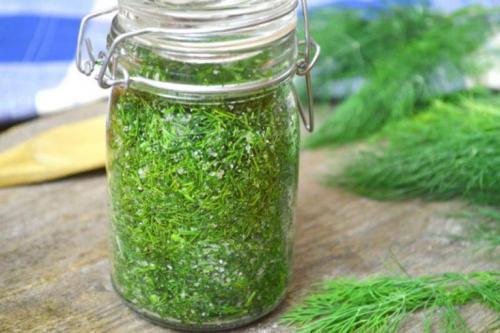

Dill salting
When using such dill, it is important to remember that it has already absorbed a sufficient amount of salt, and you need to be extremely careful when adding it to the dish.
Storage periods
Under favorable conditions, if you do not apply additional measures, fresh dill is stored in the refrigerator for about a week. Using one of the methods described above, this period can be increased several times. Salted, dried or frozen dill retains its flavor and aroma for up to 1 year.
If you have green dill on hand in your kitchen, your meals will always have a touch of spring freshness. Now you know how to keep it juicy and flavorful for a long time without too much trouble.
other methods
If you have no freezer space at all, you can choose one of the following methods.
In salt
Despite the popularity of freezing, pickling parsley for the winter is still a favorite method among thrifty housewives. Salt is an excellent preservative that keeps greens fresh for a long time. This method is easy to implement at home:
- Sort and rinse the herb thoroughly, then pat dry with a towel to remove excess moisture.
- Finely chop the parsley or grind with a blender and mix the blank with non-iodized table salt at the rate of 1 tbsp. l. salt for 200-300 g of leaves.
- When a sufficient amount of juice is released, stir the mass again until the salt is completely dissolved and put it in sterilized jars.
Store the mixture in a cool place under a tin or tight nylon lid. In this form, parsley is saved about 1 year.
When using pickled herbs in standard recipes, remember that additional salt is often not required.
In oil
Another preservative that will help keep parsley fresh for the winter is sunflower oil. Prepare the herbs as described in the previous options, then chop and place in clean, dry jars.
Pour the contents with refined oil and stir the mixture thoroughly so that the liquid is evenly distributed throughout the entire volume of greens. The top of the parsley should be completely covered in oil. Store sealed containers in a cold place up to 6 months.
In brine
Instead of vegetable oil, you can use brine or marinade as a filling.This method will save the product more than 12 months... Arrange the chopped greens in jars and cover with hot brine made from 1 liter of water from 30 g of salt, then sterilize for 5 minutes and roll up the lids.
Use the following ingredients to make the marinade:
- 1 liter of water;
- 50 g sugar;
- 50 g of salt;
- 200 ml of 6% vinegar.
Drying
In order to preserve parsley for the winter, you can use the time-tested method - drying. Typically, these herbs are added to hot dishes to add flavor.
Tear off the leaves from clean stems and spread them in a thin layer on a regular kitchen towel. Leave the workpiece to dry in the fresh air or in a well-ventilated area and stir occasionally.
It is not recommended to dry greens in direct sunlight, as they quickly turn yellow and lose their quality.
If you want to make a concentrated spice, grind the dry leaves in a coffee grinder. A pinch of such seasoning will be enough to give the dish its taste and aroma.
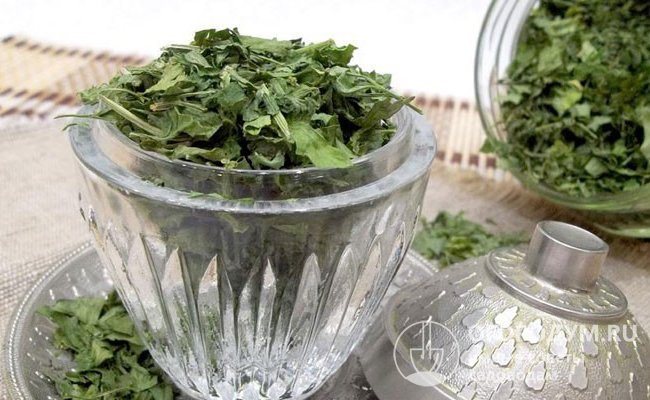

Dry leaves should be kept away from pungent odors and dampness.
Can dry the parsley along with the stalksby finely cutting the bundles with a knife or scissors. The shredded workpiece is dried as described above, or an oven is used to speed up the process.
Line a baking sheet with baking parchment and lay out the chopped herbs or leaves in an even thin layer. It will take about 2 hours to dry completely. Dry the parsley at a temperature of no more than +40 ℃ for about an hour and a half, then increase it to +70 ℃ and leave the parsley for another 20-30 minutes.
Store the workpiece in hermetically sealed glass or ceramic jars in a dark place up to 2 years... Also, for long-term conservation of dried herbs, fabric bags with ties are suitable.
We hope that our recommendations will help you prepare parsley for the winter in order to preserve vitamins and taste to the maximum.

